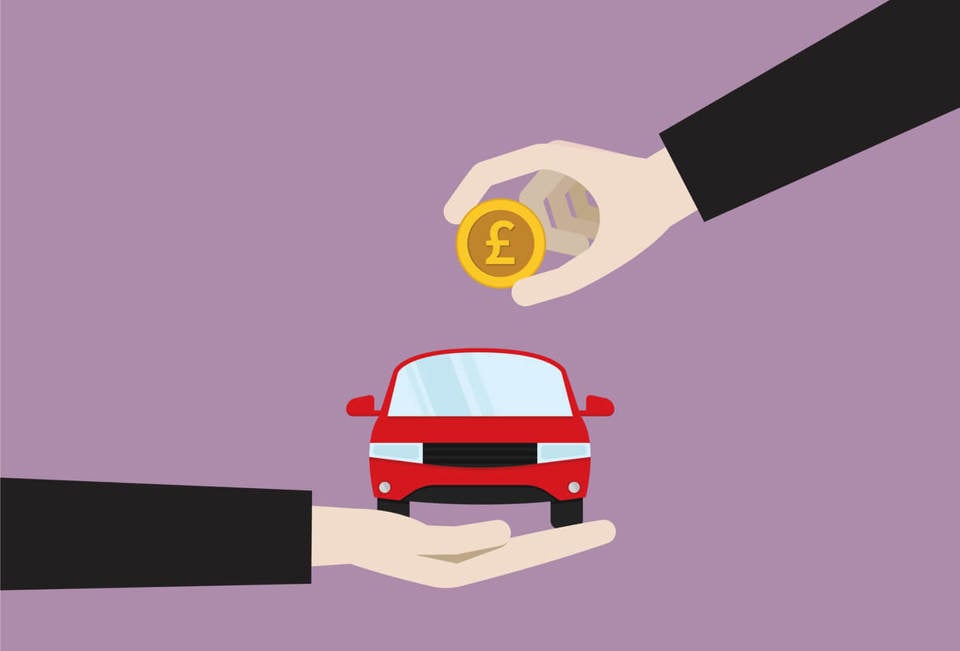Residual values of new vehicles play a massive role in the procurement of fleet vehicles, influencing the total cost of operation as well as lease rates.
Strong residual value predictions also allow manufacturers to get cars on to as many choice lists as possible, as well as making them economically attractive to organisations.
As such, when new models are launched, it is common for OEMs to work with pricing guides to ensure high expected residual values.
With organisations of all sizes now either using or appraising the viability of battery electric vehicles (BEVs), which frequently have higher list prices than their internal combustion engine (ICE) equivalents, fully-informed decisions about residual values based on hard data are likely to have an even greater impact on balance sheets in the future.
But what makes the rate of depreciation steeper for some makes and models than it is for others? And how can you best insulate your fleet against these costs to maximise the residual value?
Many fleets benchmark the residual values of their used cars and vans using the data and guidance of vehicle valuation specialists.
According to automotive industry analyst Matt Freeman, a consultant with Cap HPI, having the best data to interpret the anticipated depreciation of a fleet’s cars and vans is essential for the best possible oversight of total cost of ownership (TCO).
“Depreciation is the biggest factor in TCO by far,” he says. “Depending on mileage, it’s frequently half the cost of a vehicle over the first three years, so this can be a fairly substantial hit. And you really can’t get away from it.
“This also tends to be among the main costs driving a leasing rate, so if you can minimise the depreciation as much as possible, it’s where you can make the biggest change.
“You can look at service costs, insurance costs, fuel efficiency, fuel economy and make savings that adds up. But the biggest area that needs to be focused on is depreciation.”
Residual value performance
Freeman, who has two decades of experience within the industry, spanning analytical, consultation and manufacturing sector roles, and his team at Cap HPI work extensively with all leading manufacturer selling in the UK market to ensure the residual values of all cars and vans are both maintained and maximised.
“For many OEMs, one of the metrics they obviously use is how many new cars or vans they sell,” he adds.
“But increasingly, the residual value performance of those vehicles is also becoming a key metric for them.”
Freeman says there’s a realisation among manufacturers that what they do to make cars and vans desirable in the used market matters.
“Ultimately, it’s the used buyer that decides what the residual value is – they’re the ones that are going out and buying that vehicle.
“The dealer that buys the car at auction or through remarketing channels is basing their decision on what they know they can sell it for.
“So it’s about making sure that manufacturers have in mind that there is this used buyer with certain requirements and tastes that ultimately need to be fulfilled.”
Cap HPI often begins working with manufacturers early in the development process and, on some projects, this is even before the final design has been chosen.
Residual value optimisation
The company calls this process its “Residual Value Optimisation”, which is an in-depth analysis of a new vehicle, designed to ensure the strongest possible residual value forecast.
Resting at the heart of this is an examination of:
- The market
- The powertrain
- The different specifications of the vehicle that are available
- The ‘trims’ or features that are offered on different models
- Anticipated market volumes
- Potential ways of disposing of those vehicles in the future
- The impact of new technology included in those cars and vans.
- For example, Freeman and his team review the volume of specific new cars and vans entering the market and the potential ways to dispose of them.
“It’s often about avoiding over-supply,” he says. “We know from experience that if you have a lot of cars or vans with the same specification going back at the same time, it can have a negative effect unless they’re managed carefully.”
Cap HPI may also make suggestions to OEMs about which trims have been shown to work best with, for example, electric vehicles.
Some OEMs expect new tech features such as collision avoidance features will bolster residual values, but that isn’t always the case.
“To state the obvious, we all buy with our eyes and it can sometimes boil down to thinking through what’s going to make this car look attractive to its next owner on a wet Saturday afternoon on a used car pitch,” says Freeman.
“Used buyers are still influenced by those obvious features they can see and recognise, like leather seats and panoramic roofs.
“They won’t pay for things they can’t see or imagine using, which makes some safety features poor residual value performers.”
If a car has a nice interior or if it’s the right colour and feels really airy inside, then customers can frequently put an instant value on these features.
“For example, a panoramic roof is popular regardless of whether it’s on a diesel vehicle or a battery electric vehicle,” says Freeman.
“Customers like them and we can see from our data that there’s a price that people will pay as a premium for that kind of feature. But features like panoramic roofs are things that customers can easily see.
“What these features hopefully do is encourage potential buyers to learn more about the other equipment and technology that’s included in the vehicle.
“It’s about trying to ensure that both the used market and the used customer are being both listened to and understood when decisions are being made by the manufacturer about the equipment that should go into the car, how many trim levels it should have and how visually obvious those trim levels should be.”
Key considerations for fleet managers
So, what are the key considerations for fleet decision makers?
Freeman believes that it’s incumbent on them to ensure that the manufacturers they routinely work with have future-proofed their vehicles.
“Fleet managers obviously want the best deal they can get,” he adds.
“They will be remarketing those cars after, for example, three years and consequently they have an interest in ensuring that the cars or vans they purchase for their fleets are going to perform well in the used market.
“Consequently, it’s essential to make sure that the OEMs they deal with are getting Residual Value Optimisation studies done.
“These studies ensure that those vehicles will be more attractive to prospective customers which will, in turn, will make them easier to remarket.
“Ultimately, this should ensure the best possible outcome for manufacturers, dealers, the used buyers – as well as the fleet managers.”
Maximising the values of BEVs
The residual value optimisation of battery electric vehicles (BEVs) is currently a "huge proportion" of the work undertaken by Cap HPI.
Manufacturers are increasingly looking to ensure that BEVs have the strongest possible residual value with so many of these electric vehicles initially being sold to fleets.
"This is a big risk area for OEMs because they can only spend their investment dollar or euro once after they've chosen to invest in electric vehicles,” says Freeman.
"And they want to get the maximum out of that investment to make sure that the vehicle is as good as it possibly can be - and this has really driven a lot of demand over the last few years."
He adds this momentum is mounting as the private market for BEVs also develops via leasing and personal contract purchase (PCP) when the strongest possible residual value is equally imperative.
So, what needs to be considered when it comes to electric cars and vans?
“I think that the first thing to say when it comes to electric vehicles is that we’re still on the adoption curve, but the zero-emission vehicle mandate is in place and that’s only going to accentuate this curve,” he explains.
“At the moment, we’re in the position where the marketplace is growing as the charging infrastructure simultaneously develops… and then the infrastructure has to grow some more.
“We’re all taking steps along the EV journey.”
Freeman says Cap hpi is proactively gathering and interpreting an ever-increasing amount of data relating to electric cars and vans.
And this will continue yielding insight into the key issues affecting their residual value, including the extent to which speed of charging and range affect depreciation.
“From our perspective, it's essential to have an educated position on whether customers will pay more for the faster rates of charging and whether customers will pay more for the bigger ranges.
“We're starting to get a lot of data through now as a result of these cars becoming a larger percentage of company car parks – and we’re increasingly calling upon this data to make those calls.”




















Login to comment
Comments
No comments have been made yet.